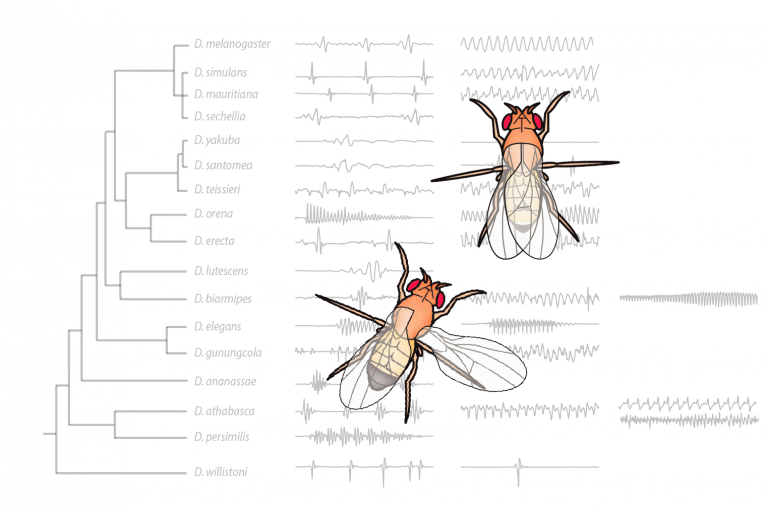What is your educational background?
I went to Wuhan University in China as an undergraduate student. During my senior year, a summer program in evolutionary biology sparked my long-term interests in understanding how organisms change during evolution. After graduation, I did my PhD work studying the origin and evolution of new genes at the Kunming Institute of Zoology under the Chinese Academy of Sciences. During my PhD, I was inspired by the evolutionary-development field (evo-devo), which views the evolution of animal body parts and patterns at the mechanistic level. However, when I tried to look for similar perspectives in explaining how behavior evolves, I found myself unanswered. This motivated me to study the mechanistic basis of behavioral evolution. In 2012, I joined David Stern’s lab at the Janelia Research Campus/HHMI where I developed new approaches to identify the genetic and neural substrates that account for species-specific behaviors, by using different fruit flies species as a model system. In July 2019, I joined the Department of Biology at the University of Pennsylvania. Here I continued to pursue my passions in understanding the genetics and neurobiology behind diversifying behaviors.
Why are you excited to be part of the Department?
I love that our department is so diverse. People are working on different but really exciting problems. On top of that, I feel that my research interests are well integrated here with our strong and active communities in many relevant research topics (evolutionary genetics, neurobiology, and Drosophila research). This combination is very unique and appealing. My colleagues are just amazing! Everyone I’ve interacted with is so generous, helpful, and supportive in various ways!
Tell us a bit about your research.
I’m fascinated by how animals came to be so different. Animal species differ not only in the way they look, but also in the behaviors they perform. We have a long history of describing the extraordinary diversity of animal behaviors; however, we know extremely little about the genetic and neural mechanisms behind the observations: how exactly do genes and nervous systems change during evolution to generate the endless diversity that we see in nature?

Tell us more about your current research program.
My lab looks for answers by studying a group of small insects called fruit flies. There are over a thousand species of them, and males perform sophisticated courtship rituals: he will follow and tap the females, vibrate his wings to sing a song, and even dance around her. These behaviors are essential for males’ reproductive success and are not identical among species. Rather, these behaviors have evolved very rapidly. Different species, even ones that are close relatives, show rich variations in various aspects of their courtship rituals. For example, a species may sing a unique rhythm, or may have a signature dance move. In addition to this rich diversity, fruit flies are known as powerful genetic and neurobiological models. It is possible to modify their genomes as accurately as a single nucleotide, and manipulate their nervous system at the level of specific neurons. We are leveraging all these advances to locate the causal genetic and neural changes underlying the rapid evolution of courtship behaviors.
If everything went right what could we learn from your research in 5-10 years
By making casual links between genetic/neuronal differences and differences in species behaviors, we hope to start asking some more general questions about the mechanisms by which behaviors evolve. Are certain genes and mutations often used to generate behavioral differences during evolution? Are there hotspots within the neural circuitry which evolve faster or play a larger role in behavior evolution? How does the existing structure and function of neural circuits facilitate or constrain behavioral evolution?

